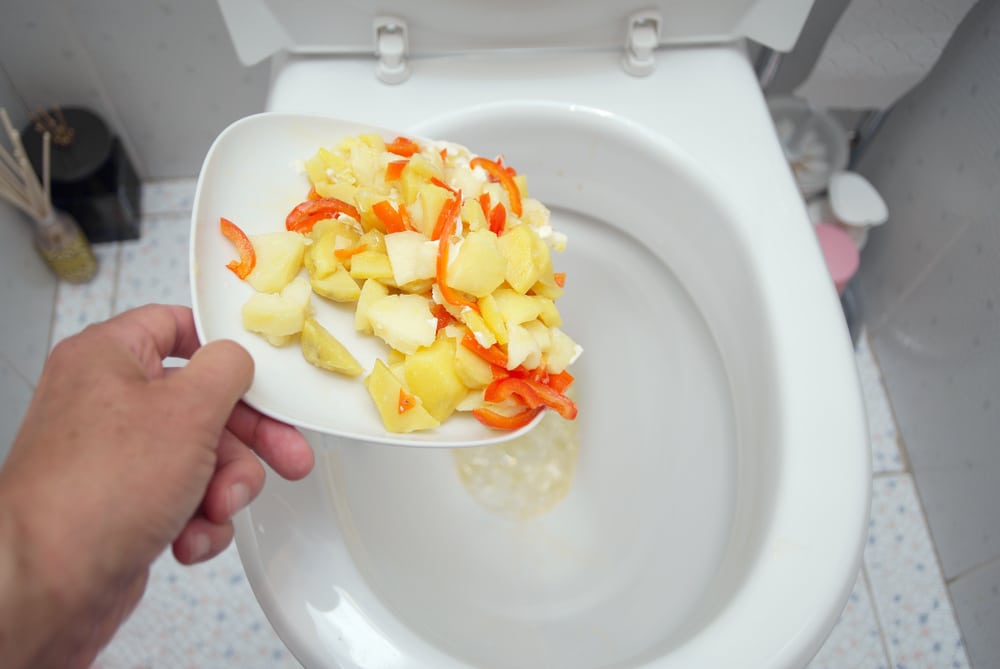Is it Acceptable to Flush Food Down the Toilet?
Is it Acceptable to Flush Food Down the Toilet?
Blog Article
We've come across this great article pertaining to What Can Happen If You Flush Food Down the Toilet? listed below on the net and think it made good sense to write about it with you on my blog.

Intro
Many people are often confronted with the dilemma of what to do with food waste, specifically when it pertains to leftovers or scraps. One usual inquiry that arises is whether it's alright to purge food down the commode. In this article, we'll explore the reasons individuals may consider purging food, the repercussions of doing so, and alternative techniques for proper disposal.
Reasons individuals might think about flushing food
Absence of awareness
Some people might not be aware of the prospective injury caused by flushing food down the bathroom. They might erroneously believe that it's a harmless technique.
Convenience
Flushing food down the commode might look like a fast and very easy option to throwing away unwanted scraps, specifically when there's no neighboring trash can available.
Idleness
In some cases, individuals might merely choose to flush food out of sheer idleness, without taking into consideration the effects of their activities.
Consequences of flushing food down the commode
Environmental impact
Food waste that winds up in rivers can add to air pollution and harm water ecological communities. Furthermore, the water made use of to flush food can stress water sources.
Pipes concerns
Flushing food can bring about clogged up pipes and drains pipes, causing pricey plumbing repairs and troubles.
Sorts of food that ought to not be purged
Fibrous foods
Foods with fibrous structures such as celery or corn husks can get entangled in pipelines and create clogs.
Starchy foods
Starchy foods like pasta and rice can take in water and swell, causing clogs in pipes.
Oils and fats
Greasy foods like bacon or food preparation oils need to never ever be purged down the toilet as they can solidify and cause blockages.
Proper disposal methods for food waste
Using a garbage disposal
For homes geared up with garbage disposals, food scraps can be ground up and flushed via the pipes system. Nevertheless, not all foods are suitable for disposal in this manner.
Recycling
Particular food product packaging materials can be recycled, lowering waste and lessening environmental impact.
Composting
Composting is an environmentally friendly means to take care of food waste. Organic materials can be composted and used to enhance dirt for gardening.
The value of correct waste administration
Decreasing ecological damage
Proper waste management techniques, such as composting and recycling, assistance lessen pollution and maintain natural deposits for future generations.
Protecting pipes systems
By staying clear of the technique of flushing food down the commode, property owners can stop pricey pipes repairs and preserve the stability of their pipes systems.
Verdict
In conclusion, while it might be appealing to flush food down the bathroom for convenience, it is necessary to understand the possible consequences of this activity. By taking on appropriate waste monitoring techniques and dealing with food waste sensibly, individuals can contribute to much healthier pipes systems and a cleaner setting for all.
FLUSH FOOD DOWN THE TOILET?
FLUSHING FOOD CAN CAUSE BLOCKED DRAINS IN YOUR HOME
All of the plumbing fixtures in your home are connected to the same sewer pipe outside of your home. This outdoor sewer pipe is responsible for transporting all the wastewater from your home to the Council sewer mains. Even small pieces of food that go down the kitchen sink can cause problems for your sewer. It should therefore be obvious that flushing larger bits of food, such as meat, risks a clog in either the toilet itself or the sewer pipes. Flushing greasy food is even more problematic because oil coagulates when it cools, coating the interior lining of your pipes.
THE TOILET IS NOT A BIN
Food isn’t the only thing that people shouldn’t be flushing down the toilet. People use the toilet to dispose of all kinds of things such as tampons, makeup wipes, dental floss, kitty litter and even underwear. Water goes to great lengths to educate residents about the high costs and stress placed on wastewater treatment systems simply from people flushing the wrong stuff down the toilet. It costs taxpayers millions of dollars each year, and homeowners thousands in blocked drain repairs.
FLUSHING FOOD IS A WASTE OF WATER
Flushing food is a waste of our most precious resource - water. In June this year Level 1 water restrictions were introduced to protect water supply from drought conditions. Much of New South Wales continues to be affected by prolonged drought with recent figures revealing up to 97 per cent of the state remains in drought. Depending on whether you have a single or dual flush toilet, every single flush uses between five and 11 litres of water. In the current climate this is a huge amount of water to be wasting on flushing food that should be placed in the bin (or better yet, the compost).
https://www.jabplumbingsolutions.com.au/blog/can-you-flush-food-down-the-toilet

As a person who reads on Think Twice Before Flushing Food Down Your Toilet, I thought sharing that excerpt was essential. Do you know about another individual who is inquisitive about What Can Happen If You Flush Food Down the Toilet?? Take a moment to share it. Bless you for your time. Please come visit our website back soon.
Click Here Report this page